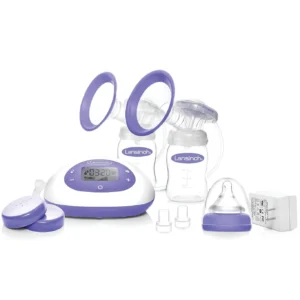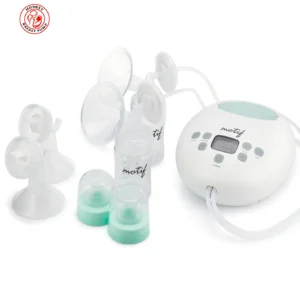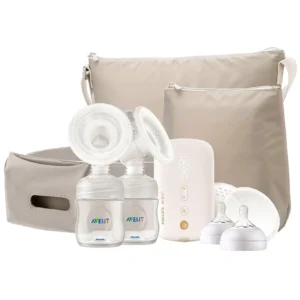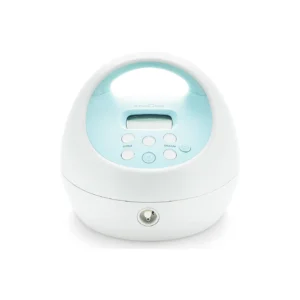Double breast pump
Double breast pumps have revolutionized the breastfeeding experience for mothers, offering efficiency, convenience, and flexibility like never before. Whether you’re a busy working mom, a stay-at-home parent, or simply seeking to optimize your breastfeeding journey, a double breast pump can be an invaluable tool. In this guide, we’ll explore everything you need to know about double breast pumps, from their benefits to how to use them effectively.
- Understanding Double Breast Pumps:
- What is a double breast pump?
- How does it differ from a single breast pump?
- Types of double breast pumps: electric vs. manual.
- Benefits of Double Breast Pumps:
- Time-saving: Express milk from both breasts simultaneously.
- Increased milk supply: Stimulates milk production effectively.
- Convenience: Ideal for working moms or those with busy schedules.
- Flexibility: Allows for pumping anywhere, anytime.
- How to Use a Double Breast Pump:
- Preparation: Wash hands and ensure pump parts are clean.
- Assembly: Fit the breast shields properly for comfort and efficiency.
- Positioning: Sit comfortably with proper posture.
- Initiate Pumping: Start with a low suction level and gradually increase.
- Adjust Settings: Customize suction strength and speed according to comfort.
- Duration: Aim for 15-20 minutes per session, mimicking a baby’s feeding pattern.
- Storage: Properly store expressed milk in clean containers or breast milk storage bags.
- Tips for Effective Pumping:
- Stay relaxed: Relaxation aids milk flow.
- Hydration and Nutrition: Stay hydrated and eat a balanced diet.
- Pumping Schedule: Establish a regular pumping routine.
- Massage: Gently massage breasts before and during pumping to encourage milk letdown.
- Hands-Free Pumping: Utilize hands-free pumping bras for multitasking.
- Recommended Double Breast Pumps:
- [Brand/model 1]: Features, pros, and cons.
- [Brand/model 2]: Features, pros, and cons.
- [Brand/model 3]: Features, pros, and cons.
- Maintenance and Cleaning:
- Daily Cleaning: Wash pump parts with warm, soapy water.
- Sterilization: Sterilize parts as recommended by the manufacturer.
- Storage: Ensure all parts are completely dry before storage.
- Regular Inspection: Check for wear and tear, and replace parts if necessary.
- Troubleshooting Common Issues:
- Low Milk Supply: Tips to increase milk production.
- Discomfort: Adjusting pump settings for comfort.
- Poor Suction: Checking for proper assembly and fit.
Conclusion: Double breast pumps offer a convenient and efficient way for mothers to express breast milk, providing flexibility and support for various lifestyles. By understanding how to use them effectively and choosing the right pump for your needs, you can optimize your breastfeeding journey while balancing the demands of daily life. With the right knowledge and tools, breastfeeding can be a rewarding experience for both you and your baby.





